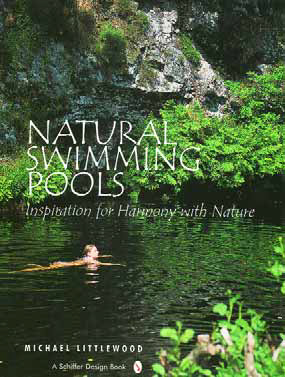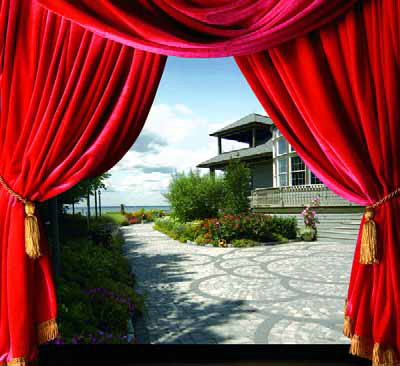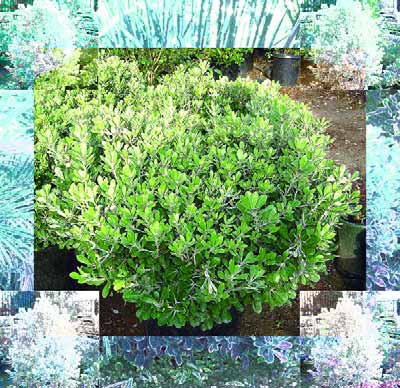ARTICLES
Advance Search
Aquatic Health
Aquatic Health, Fitness & Safety
Around the Internet
Aquatic Culture
Aquatic Technology
Artful Endeavors
Celebrity Corner
Life Aquatic
Must-See Watershapes
People with Cameras
Watershapes in the Headlines
Art/Architectural History
Book & Media Reviews
Commentaries, Interviews & Profiles
Concrete Science
Environment
Fountains
Geotechnical
Join the Dialogue
Landscape, Plants, Hardscape & Decks
Lighter Side
Ripples
Test Your Knowledge
The Aquatic Quiz
Other Waterfeatures (from birdbaths to lakes)
Outdoor Living, Fire Features, Amenities & Lighting
Plants
Ponds, Streams & Waterfalls
Pools & Spas
Professional Watershaping
Structures (Editor's Notes)
Travelogues & History
Water Chemistry
WaterShapes TV
WaterShapes World Blog
Web Links
Around the Internet
Aquatic Culture
Aquatic Technology
Artful Endeavors
Celebrity Corner
Life Aquatic
Must-See Watershapes
People with Cameras
Watershapes in the Headlines
From the streets of London to the forbidding environs of horror movies, fog has always been capable of stirring our imaginations. It's the stuff clouds are made of and an enduring symbol of mystery, and it's not too surprising that enterprising people would try to figure out how to generate and use this most elemental of atmospheric vapors as a practical tool and distinctive design element. To start our story, let's flash back to 1970, when the first-ever artificial-fog system made its debut at the World's Fair in Osaka, Japan, as part of Pepsi's revolutionary Pavilion of the Clouds. Just a year earlier, my father, cloud expert Tom Mee, had founded Mee Industries to provide instrumentation that was to enable the government to do a better job of studying clouds and airborne pollution. I can only imagine what it was like for him to receive a call from Japanese artist Fujiko Nakaya, who asked him to develop a system that would generate a cloud to would enfold the outside of a 200-foot dome as a key element of her design for the pavilion. Interestingly, Nakaya was the daughter of the man who had pioneered snowmaking technology, and I've always been intrigued that she wanted to make a
For many years, I sat on the sidelines and watched others learn to use CAD to their professional advantage. I'm a fine artist by background and training and have always had great confidence in my ability to draw freehand. But I also yearned to become proficient with computers because I was convinced they'd streamline my work, offer me additional tools that would facilitate expansion of my business and, overall, make me a better landscape architect. I was completely
Did you know that there's a strong trend toward creating ponds that are made for swimming in Germany and Austria? That revelation came by way of a terrific book I just finished - Natural Swimming Pools: Inspiration for Harmony with Nature by Michael Littlewood (Schiffer Publishing, 2004). Littlewood is an American landscape designer who moved to Europe several years ago and has since become involved in the design and installation of naturalistic watershapes that are a distinct departure from run-of-the-mill concrete pools we encounter in the United States. Indeed, he and scores of other watershapers throughout Europe are setting up vinyl-lined ponds that lack most of what we'd recognize as pool features or equipment, but are deep enough and big enough for swimming and other forms of aquatic exercise. And the simple fact is that their European clients seem inclined to
It often happens that the way people enter a space has everything to do with the way they experience it and come to regard its overall design. This was much on my mind as we concluded our work on the Long Beach Island project I've discussed in my last few "Details." By orchestrating access and movement toward the backyard/pool area, we developed a string of transitions that lend a sense of surprise and delight to those entering a beautifully designed and constructed space that literally seems like a world apart. As discussed in previous columns, the backyard features a
It may seem an odd source of inspiration, but I've always been interested in retaining walls. Even as a child, I'd see photographs of terraced hillsides rich with crops and wonder, "How did they do that?" I've since done my homework and have found historical evidence indicating that the skills needed to build these structures goes back many hundreds of years. I'm now applying those same skills today in devising soil-retaining systems for my clients. Whether it's farmers creating flat spaces on which to
In looking back over several recent projects, I noticed that I've been using one particular genus of plants more frequently than just about any other. Its name probably evokes thoughts of petri dishes and bacterial colonies for most of us, but this plant genus - Pittosporum - has truly held an extremely valuable position in most of my plant palettes in recent years and is one of the most useful of all plant types I use. I find myself pointing them out every time I take clients to a nursery to view and select plants, and it seems I'm always trying to find ways to fit one or more of its many varieties into my planting plans. I treasure them for their great variety in
For centuries, the Mediterranean gardens of Italy, France, Greece and Spain have put sun-thriving plants on beautiful display in dry environments. The Greek isles flourish with wildflowers whose colors become more vivid against the bleached background, while Spanish gardens combine the fragrant blossoms of citrus trees and the fragile pink blooms of Almond trees with open, arid landscapes. Italian and French gardens present more formal atmospheres, incorporating boxed and trimmed trees with trellises and pergolas draped with vines. Each area has its distinct style, but the main elements of these gardens are the same, with the hot sun being the primary common factor. As is revealed, however, in Designing and Creating a Mediterranean Garden by the English artist Freda Cox, it is possible to cultivate
One of the perks of my job as Editor of WaterShapes is that from time to time I get to go on the road to see truly great work in person, often in stunning locations. Occasionally, however, when I walk on site my best expectations are blasted to
In my years as a practicing landscape architect, I've found that designers love in particular to borrow elements from the Spanish Colonial style of architecture. In fact, it has become one of the most important and influential of all architectural forms. This archetypal architecture flourished between the 16th and early-19th centuries in the New World and is based upon historical models established in






















